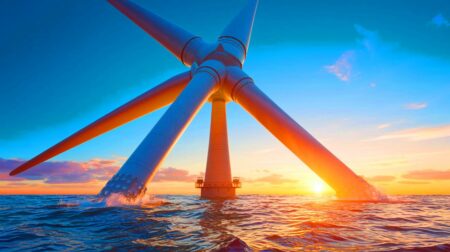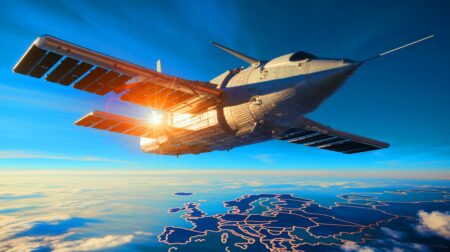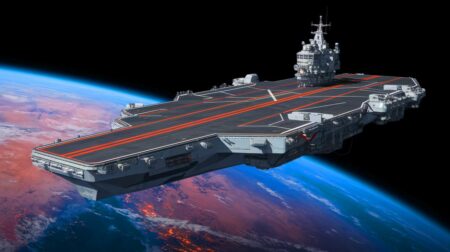| IN A NUTSHELL |
|
In the realm of modern aviation, China is poised to make a substantial leap forward with the development of the C949, a supersonic airliner that promises to transform air travel. By integrating cutting-edge technology and innovative design features, this aircraft aims to surpass the capabilities of the legendary Concorde. The C949 is set to offer a 50% increase in range and a significant reduction in noise levels, redefining what is possible in the skies and potentially reshaping the future of supersonic travel on a global scale.
Revolutionizing Supersonic Travel with Innovative Design
The C949 represents a new era in aircraft design, spearheaded by Comac’s leading aerodynamicist, Wu Dawei. The project seeks to advance the legacy of the Concorde by addressing two of its most significant limitations: range and noise. The aircraft’s target range of 6,800 miles is a remarkable 50% increase over the Concorde’s 4,500 miles. This advancement allows for non-stop flights across vast distances, such as from Shanghai to Los Angeles, potentially reducing transcontinental travel times to a mere five hours.
Comac’s design includes a shape-shifting fuselage with a reverse-camber midsection, which minimizes sonic booms and enhances aerodynamic efficiency. The aircraft’s needle-like nose extension and aerodynamic bulges work in harmony to split and scatter shock waves, significantly reducing the noise impact. This reduction in noise is crucial for gaining regulatory approval for overland supersonic flights, which have historically been restricted due to the disruptive sonic booms produced by earlier supersonic jets.
Miracle Down Under: Australian Patient Walks Free with Artificial Heart After 100+ Days
Technological Innovations and Challenges
The C949’s ambitious design is complemented by sophisticated technology that ensures stability and performance. The aircraft will incorporate an artificial intelligence-powered fly-by-wire system, offering full control access to manage extreme aerodynamic non-linearity. This system is essential for maintaining stability at high sideslip angles, which can be particularly challenging at supersonic speeds.
One of the most intriguing aspects of the C949 is its dynamic fuel system. Capable of shifting 93,000 pounds of fuel between seven tanks, the system maintains the aircraft’s balance and optimizes the center of gravity during flight. This level of precision is critical for the smooth operation of the aircraft, especially during its high-speed voyages. The integration of these advanced systems highlights the meticulous planning and engineering prowess that Comac brings to the table, ensuring that the C949 is not only faster but also safer and more efficient.
Market Potential and Future Prospects
The market for supersonic travel is poised for expansion, with industrial estimates suggesting that it could accommodate 45 million passengers annually. This figure represents about 1% of the total global air passenger market, indicating significant potential for economic growth. The C949 is designed to capture a substantial share of this market by offering a mainstream viable option compared to niche-focused competitors like Boom Supersonic and NASA’s X-59 QueSST.
With a seating capacity of 28 to 48 passengers, the C949 prioritizes comfort and exclusivity, targeting business-class travelers who value speed and efficiency. Initially, the airliner will operate along trans-Pacific routes, minimizing noise complaints by flying over ocean corridors. As acceptance of supersonic travel grows, the C949 could pave the way for broader applications, eventually expanding to more densely populated areas and shorter routes.
Miracle Down Under: Australian Patient Walks Free with Artificial Heart After 100+ Days
Comac’s Vision for the Future
Comac’s ambitions extend beyond the C949, as outlined in their comprehensive timeline of future projects. By 2027, the company plans to launch the twin-aisle C929, challenging Boeing’s 787 in the commercial aviation market. Further down the line, the 400-seat C939 is set to enter the fray, targeting the Boeing 777X market by 2039. The development of the C949, scheduled to enter service by 2049, aligns with the 100th anniversary of the People’s Republic, marking a milestone in China’s aviation industry.
Additionally, Comac is exploring the concept of space-air hybrid vehicles, aiming to bridge the gap between air travel and space exploration. This vision underscores the company’s commitment to innovation and its desire to lead the charge in both aviation and aerospace technology. As these projects unfold, they could redefine the boundaries of human travel and exploration, setting new standards for speed, efficiency, and sustainability.
As China positions itself at the forefront of supersonic aviation, the C949 stands as a testament to the nation’s engineering ingenuity and ambition. With its groundbreaking design and technological advancements, the aircraft is poised to shape the future of air travel, offering passengers unprecedented speed and comfort. As we look to the skies and wonder what new horizons await, the question remains: How will the world adapt to the resurgence of supersonic travel, and what impact will it have on our interconnected global society?
Did you like it? 4.6/5 (30)









Wow, this sounds amazing! Can’t wait to fly on the C949 someday. ✈️
More Chinese vaporware.
How does the shape-shifting fuselage work exactly? 🤔
Good for long distance travel
This seems like a massive leap forward in aviation. Great job, Comac! 👏
A massive leap forward in nonsense you mean.
It’s 95% more quiet because 95% of the time the engines won’t even start. 😬🤣
Doesn’t this just mean more expensive tickets for regular folks?
The Concorde was iconic, but it’s time for a quieter option. Can’t wait! 🌟
Why are they focusing on trans-Pacific routes specifically?
I’m skeptical… How can they really make it 95% quieter? 🤨
They can’t. More Chinese vaporware
Hope they have a good plan for emissions. Supersonic travel isn’t great for the planet. 🌍
Will the C949 be as fast as the Concorde?
28 to 48 passengers? Sounds exclusive! 🤑
Thank you for the detailed article. Supersonic travel has always fascinated me. 😊
Price will definitely be a huge factor. Who can actually afford this?
Shape-shifting fuselage? Sounds like something out of a sci-fi movie! 🚀
When is the first flight scheduled? Can’t wait to see this in action!
Hope they have a good solution for overland flights. Noise is a big issue.
What about safety measures at such high speeds?
Good job, China! This is how you push the boundaries of technology. 🇨🇳
Are there any plans for a larger version of this jet in the future?
How does this compare to Boom Supersonic’s plans?
Finally a quieter supersonic option! Concorde was too loud. 🙉
Will this affect flight paths and air traffic control significantly?
Thank you for the informative article. Very insightful! 🙌
Can’t wait to see how this impacts the aviation industry globally. 🌍
What is the expected ticket price? I bet it’s going to be astronomical!
Why does it take until 2049 for entry into service?
The tech behind this is mind-blowing. AI-powered fly-by-wire systems? Wow! 🤖
Hope they focus on environmental impact too. Supersonics aren’t usually eco-friendly.
Shape-shifting fuselage to reduce noise? That’s genius! 💡
Does this mean the return of supersonic travel is near?
How do they manage to shift 93,000 pounds of fuel mid-flight? 🚀
What’s the next step after the C949? Is Comac planning more innovations?
Is there any collaboration with other countries or companies on this project?
Sounds good, but I’ll believe it when I see it. 🧐
With all this tech, I hope they keep maintenance costs in check.
Why is it called the C949? Is there a specific meaning behind the name?
When can we expect to see the first prototype? 🤓
Sounds exciting! Hope it lives up to the hype. 🎉
Is there any room for cargo on this plane?
Great article! Can’t wait to see how this develops over the next few years. ✈️
Google the writer’s name and you won’t find anything. The writer’s bio uses male pronouns but the picture is a female. Many of these comments sound fake – like Amazon reviews from non-verified purchasers. Nothing substantial – just laudatory comments celebrating Chinese superiority (weirdly, over an aircraft which hasn’t flown in decades and was designed decades ago.) The article doesn’t indicate the aircraft is anywhere near production. This is typical Chinese propaganda – unsubstantiated, uses a non-existent western “journalist” with a name which was spelled phonetically (Irwin vs Eirwen) and without an understanding of gender in English (possibly adding an “e” to indicate the feminine, like French.)
China is already flying their single aisle C919 which was once thought to be Chinese
propaganda. China does not have the capability to build commercial planes, since aviation has been long dominated and controlled by the duopoly Airbus and Boeing.
Now they are building their double aisle C929 to be ready by 2027.
China usually walk their talk. They did build their own space station, Mars rover and lunar modules without outside help. So this supersonic plane is just another project to be dealt with. Like their two 6th gen jets that have been doing test flights recently. Don’t doubt their technical ability.
Good for long distance travel